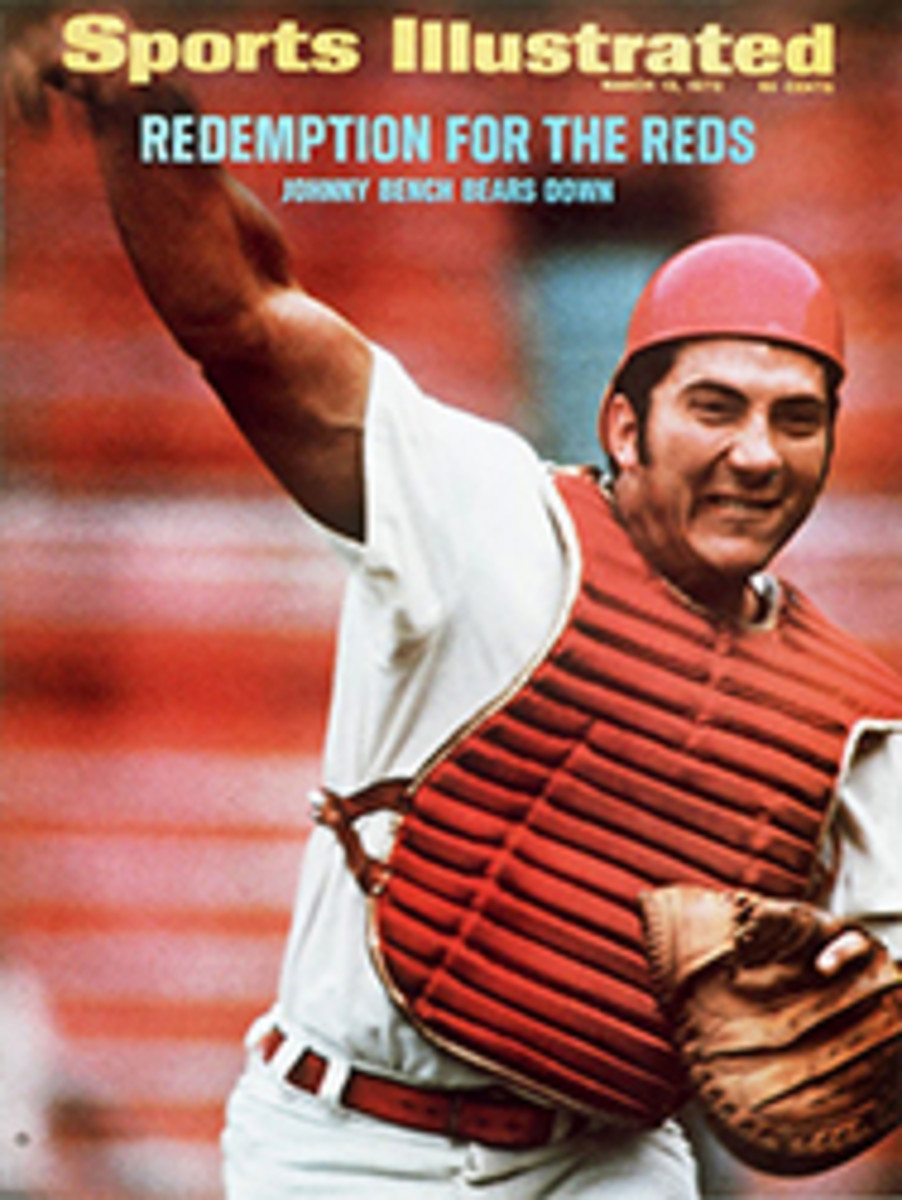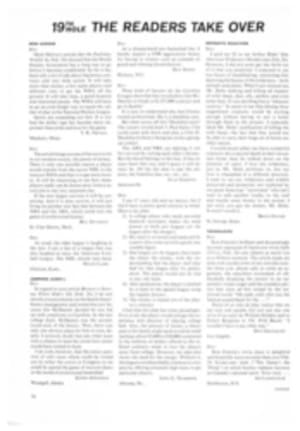
A Canadian critic grows restless over the U.Surpation of his country's gift to sport
Of all the bounty Canadians have yielded to an ungrateful, even insatiable United States (and anybody's short list must include the sayings of Marshall McLuhan, as well as the liberal contributions of Bonanza's Ben Cartwright, Pitcher Ferguson Jenkins, the trees that are processed into The New York Times and the illuminating fictions of Arthur Hailey), the greatest, un-arguably, is ice hockey. Our very own Canadian thing. We have not only shared the game but also bequeathed some of its finest practitioners to the other America: Gordie Howe, Bobby Hull and the truly superlative Bobby Orr.
Imagine the shoe being on the other foot: Bowie Kuhn taking the Montreal Expo management aside and asking, "Could you fit Vida Blue into the starting rotation, and if we sent him up would you be nice enough to play Henry Aaron every day?" We are undoubtedly the last of the big givers. Now, if there can be said to be such a thing, we are shipping out even the literary heritage surrounding hockey—most recently between the covers of Goaltender, by Gerry Cheevers of the Boston Bruins, with Trent Frayne (Dodd, Mead; $5.95).
I was brought up on real hockey, before the slap shot and head-manning the puck all but displaced stickhandling. Mine was a six-team league, charged with talent, wherein the bruiser who scored 20 goals in his debutante year was going some. Last season, on the other hand, rookie Center Gil Perreault was able to score more than 30 with nobody worth mentioning on either wing.
In my time records signified something. Nobody committed an outlandish 100 points a year. But only last season four Boston Bruins—Orr, Phil Esposito, Johnny Bucyk and Ken Hodge—did better. Any league in which Bucyk and Hodge can look that good is holding up not a mirror but a magnifying glass to nature. To take a socially relevant, rather than esthetic, point of view it must be said that the cause of this decline in quality—a febrile expansion from six to 16 teams in six years—has allowed aging or mediocre players, like wilting corporation presidents, to retire to California, permissive California, where they continue playing, insufficiently, for untutored fans. Fans who simply cannot appreciate hockey as we do. (Look here. Such is our devotion, Canadian voters once even sent a defenseman, Red Kelly, to Parliament. And when it turned out that legislating and hockey conflicted, he had the good sense to quit—Parliament, of course.)
So seeing the game popularized, catching on in the other America, CBS paying the NHL a million dollars for the rights to the Sunday-afternoon game of the week, Bobby Orr making the cover of U.S. magazines, Derek Sanderson in Life, Esquire and The New Yorker, hockey books proliferating—well, we are pleased, we are flattered, yes, yes. But we are also apprehensive. Outsiders have stumbled onto our secret four-star restaurant and, while we applaud its new affluence, we fear for the quality. These days hyperbole is all.
In this new order, Bobby Orr is being touted as the game's savior, something of a latter-day Babe Ruth, and the resurgent Bruins as the greatest team ever to take to the ice. I shall always cherish them for the brilliant, exciting East Division final they lost to the Canadiens in 1968-69. The following season the Canadiens collapsed, and the Bruins ran away with everything. Then last season—which Cheevers writes about in Goaltender—Boston became the first team ever to win 57 games in a season and accumulate 121 points and score 399 goals. But come Stanley Cup playoff time, the serious hour, and the Canadiens beat them again. It was a stunning rookie goaltender, Ken Dryden, who really did them in.
Cheevers, who shares the Boston netminding job with Eddie Johnston, gives Dryden his due. Appreciation of other goalies, in fact, is a characteristic of his breezy book. (Not so the expansion teams. "The L.A. Kings were in last night," he writes. "Their coach, Larry Regan, told the newspapers he'd have a surprise in store for the Bruins. He must have lost it on his way to the Garden. The game was one of those expansion-team bores where we score seven or eight and they score three or four. This time it was us seven, them three.") Not surprisingly, Cheevers is especially grateful to Jacques Plante, the first goaltender to wear a mask, in 1959, and who made it acceptable, in 1967. Before the mask came into general use, Cheevers writes, "The slap shot hadn't been invented and deflections weren't part of the design of offense. Those two aspects are so refined now that I feel any goalkeeper is an idiot who refuses to wear a mask." Indeed. Goaltending in the NHL, what with pucks coming at you from all angles at 110 mph, must be among the most hazardous of all jobs in sport.
Cheevers is no mean goaltender, himself, and so I wish I could praise his journal more. It is likable, but superficial. Just the trick, I should think, for somebody's hockey-crazed nephew, but not for adults.
Hockey still awaits its Jim Bouton.
Ted Green's engrossing story of his paralyzing and near-fatal hockey accident, and his comeback, part of which was told in this magazine, has been published as a book, High Slick, by Dodd, Mead ($5.95).

